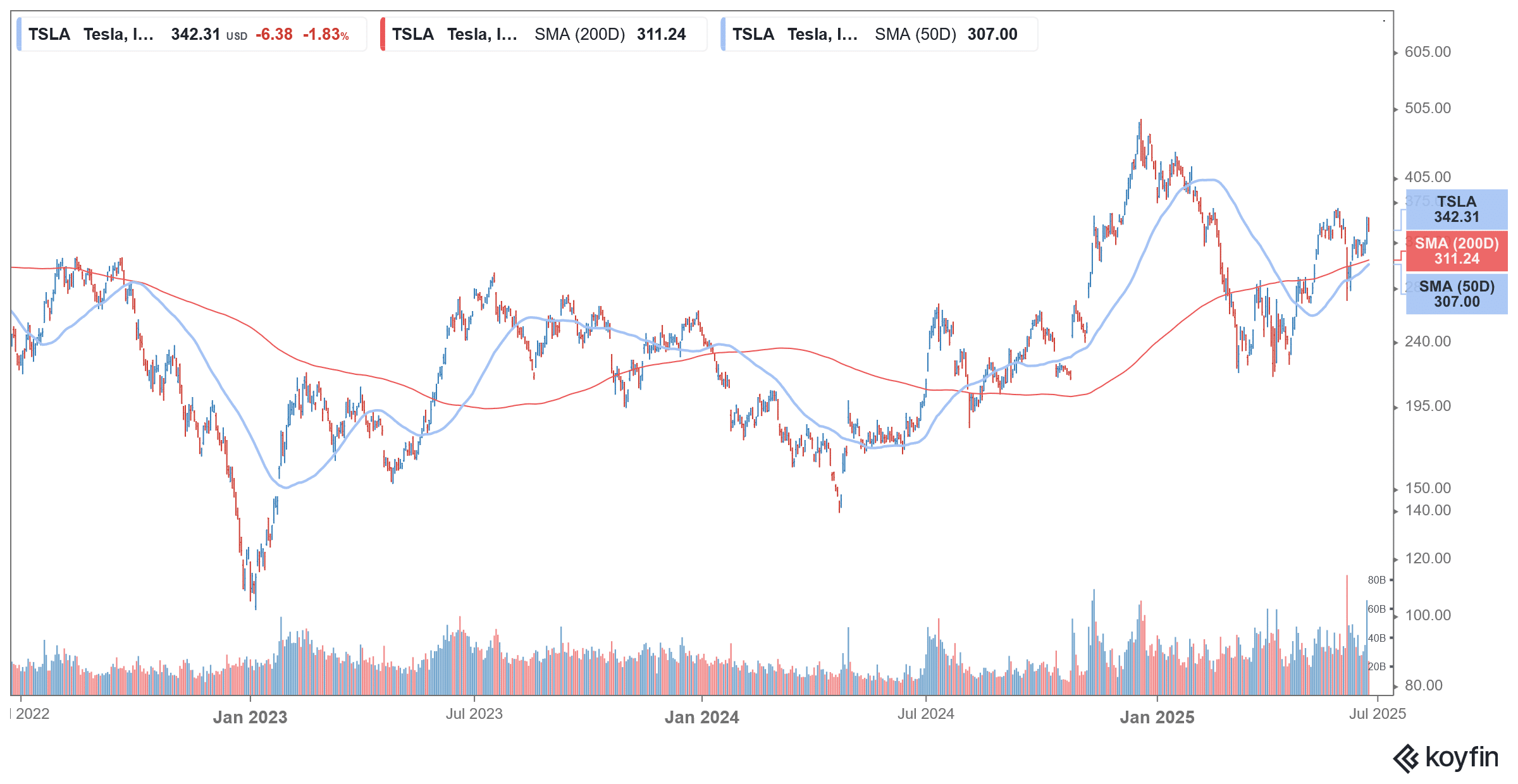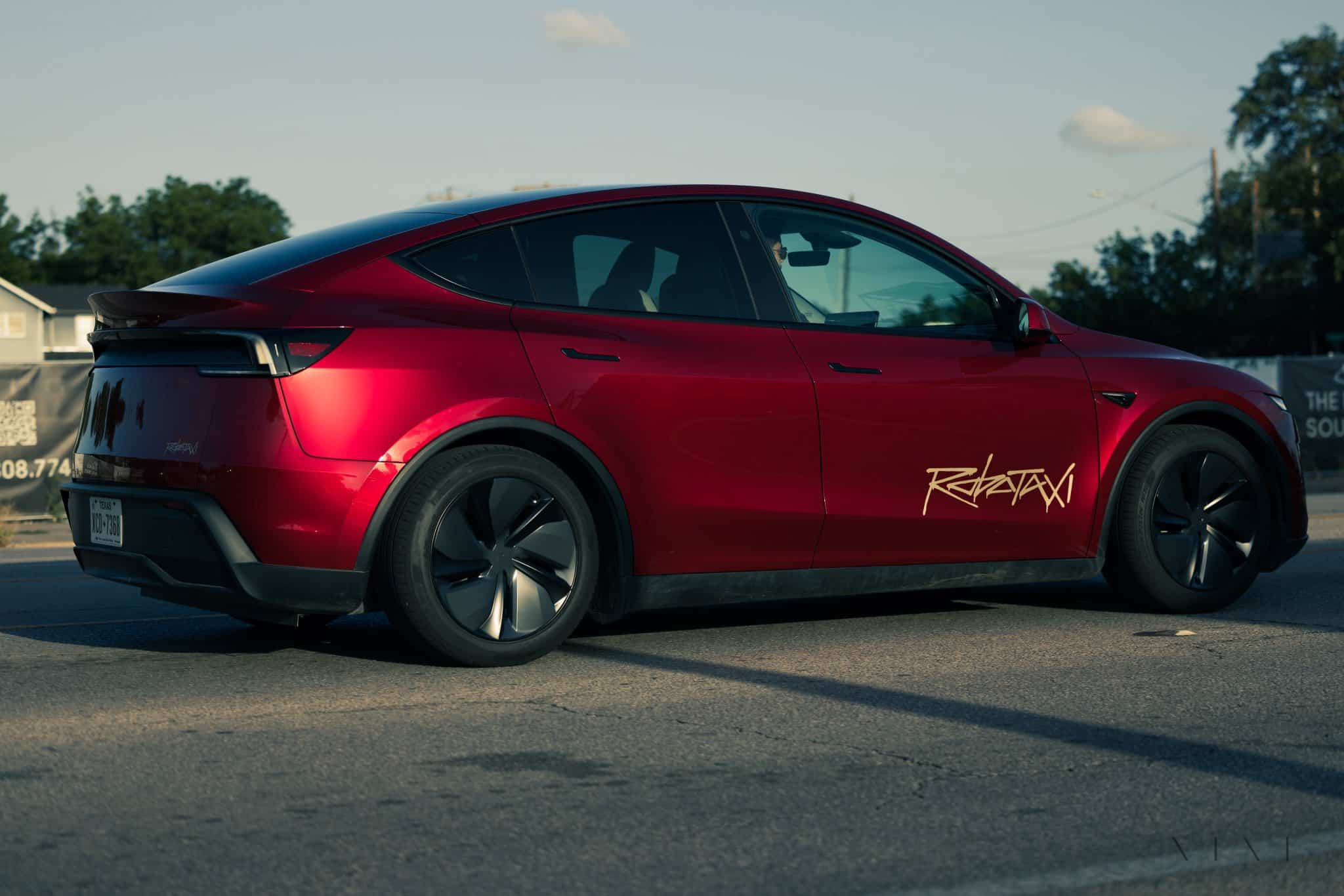On Sunday, Tesla began offering its brand-new robotaxi service in Austin, meeting the deadline set by CEO Elon Musk. The stock soared over 8% on Monday as markets gave a thumbs up to the timely rollout, even as a section saw it as “staged” given the fact that the initial set of riders were by invitation and most, if not all, were known for their pro-Tesla views.
However, Tesla stock fell on Tuesday and Wednesday after critics suggested that the robotaxi rollout wasn’t as flawless as previously thought. The U.S. National Highway Traffic Safety Administration (NHTSA) also contacted Tesla after multiple videos showed its robotaxis violating traffic laws in Austin. To make things even more complicated, Texas has enacted new rules just ahead of Tesla’s robotaxi rollout.
What Does the Texas Law on Robotaxis Say?
The new Texas robotaxi rules starting September 1 require autonomous vehicle operators to get priori approval from the State’s Transportation Department and testify that they follow state traffic laws. It also mandates that operators should meet federal safety standards, use onboard recording devices, and ensure that vehicles have the functionality to safely stop in case the self-driving system fails. Additionally, the vehicle should necessarily be registered, titled, and insured in Texas.
Importantly, the law gives the state the power to revoke permits for any operator that is seen as a public danger. This gives Texas the power to revoke Tesla’s permit if it perceives its robotaxis as a risk to the public. While the rules are a headwind for Alphabet-backed Waymo, which also operates robotaxis in Austin in collaboration with Uber, Tesla could be at a higher risk, as Musk has ruffled the feathers of both Democrats and Republicans.
🚨🚨🚨 TEXAS PASSES ROBOTAXI LAW REQUIRING LEVEL 4 AUTONOMY FROM SEPT-1st.
Gov Abbott signed the bill *yesterday*. Texas lawmakers asked Tesla to delay their Austin robotaxi launch in light of the bill.
Clear message to Tesla: keep your deadly Level 2 ADAS out of Texas.$TSLA pic.twitter.com/rTRPthxv1b
— Motorhead (@BradMunchen) June 22, 2025
The law requires them to qualify as an automated vehicle. The software should have at least “Level 4 or L4” autonomous-driving capability. Prior to the robotaxi rollout, Tesla’s full self-driving software was largely seen as L2, and we still don’t have an official confirmation from Tesla on whether it has indeed hit L4 capabilities (and it would likely reveal that if it had).
Notably, while responding to NHTSA queries on its robotaxi rollout, Tesla asked the regulator to hide its response from the public. The company’s responses would have helped gauge whether it has indeed hit unsupervised self-driving capabilities that Musk has been touting for a decade now.
Was Tesla’s Robotaxi Rollout Staged?
Many of those who got the invite to ride the robotaxi are known to post pro-Tesla views online, and some commentators have even termed the rollout as “stage managed.” To be sure, the robotaxi did not have anyone sitting in the driver’s seat with their hand on the steering wheel, which is required when FSD is engaged in its regular cars. However, the cars each had a passenger, believed to be a Tesla employee, sitting in the front passenger seat.
Strangely, the person in the driver’s seat seemed to always have their finger on the door unlatch button, which some guessed was a kill switch for the self-driving system in case of errors. Moreover, the route that Tesla chose for robotaxi was quite limited, and the area was geofenced to ensure it did not have difficult intersections and also avoided downtown areas. The service won’t be available in bad weather, which is not surprising, as previously, Tesla FSD proved vulnerable in bad weather. The company relies on cameras instead of lidars, which most other autonomous driving companies use, and the approach has been found wanting in bad weather.
Meanwhile, videos show that a Tesla robotaxi was traveling the wrong lane, while some others show it exceeding the speed limit. It was also seen dropping off passengers in the middle of the road. In yet another video, the car is seen braking hard in the middle of the road, responding to stationary police vehicles, as can be seen in the video below.
NHTSA Is Gathering Information About Tesla Robotaxi
The NHTSA is gathering more information from Tesla, and in its statement, it said, “NHTSA is aware of the referenced incidents and is in contact with the manufacturer to gather additional information.”
It added, “NHTSA will continue to enforce the law on all manufacturers of motor vehicles and equipment, in accordance with the Vehicle Safety Act and our data-driven, risk-based investigative process. Following an assessment of those reports and other relevant information, NHTSA will take any necessary actions to protect road safety.”
The NHTSA is already investigating previous instances of fatal crashes where Tesla FSD was engaged. Allegations that Tesla automatically turns off FSD seconds before crashes have only increased suspicions that it isn’t ready for the road.
The agency even finds the very name FSD misleading, as the software is not fully autonomous, as the name suggests.
Tesla Fans Were Impressed with the Robotaxi Rollout
Meanwhile, even as skeptics scoffed at the robotaxi launch, Tesla fans were quite impressed and saw Tesla’s rally continuing after the successful rollout.

All said, autonomous driving is still an emerging technology, and there are bound to be initial hiccups. Even Waymo, which recently hit the milestone of 10 million paid robotaxi trips, is also struggling in the court of public opinion. For example, in a widely circulated video, Waymo driverless cars were seen repeatedly honking in a San Francisco parking lot in the middle of the night.
While errors like the repeated honking incident may not seem like a big deal by themselves, they raise concerns about whether Waymo – or, for that matter, any other company can ever come up with a perfectly safe (or even reasonably safe) robotaxi.
However, while self-driving makes up a small part, if any, of Alphabet’s valuations, by Musk’s own assertion, autonomous driving accounts for the bulk of its over $1 trillion valuation. Over the years, Musk has given the impression that full autonomy is within striking distance for Tesla, but the company hasn’t hit that level even now, or at least that is what we make out from the robotaxi rollout.
In the coming days, markets will be closely watching the robotaxi rollout, and any major incidents associated with the service could dampen sentiments, especially as Tesla’s automotive business continues to be in big trouble, with sales expected to fall in the second quarter as well.
